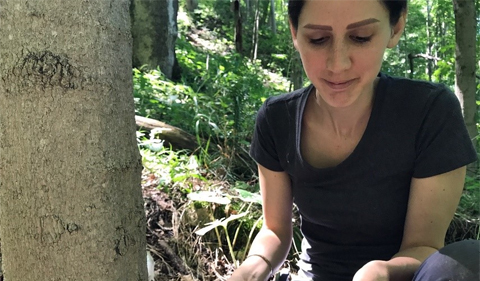Dr. Viorel Popescu and graduate student Heidi Bencin presented a poster on “Predictors of road mortality for the recovering Ohio bobcat (Lynx Rufus)” at the Ohio Fish and Wildlife Management 2018 conference, held Jan. 26 in Columbus.
They reported that bobcats were 50 times more likely to be killed on interstates than smaller roads, especially during mating season in March and kitten rearing in October.
Popescu is Assistant Professor of Biological Sciences. Bencin is a graduate student in the ecology and evolutionary biology program.
Abstract: During the 19th century, bobcats were extirpated from several U.S. states along the east coast and throughout the Midwest. In recent years, populations have begun to recolonize many of these areas, including Ohio. Currently, vehicle collisions represent the greatest source of bobcat mortality in the state. To identify predictors of road mortality and potential population sinks for this state-recovering species, we analyzed landscape (national land cover data) and local (road traits, road density) variables using a long-term data set (1978-2016) of geo-referenced road kills. We used generalized linear models to compare road kill points (n = 439) to random road points. Road traits were overall a better predictor of road mortality than land cover. Road type was the most significant variable; bobcats were more than 50 times more likely to be killed on interstate routes than smaller roads. Occurrences of vehicle strikes were also found to increase during March and October, correlating with the mating and late kitten rearing seasons, respectively. Results reveal spatial and temporal population sinks, and will help with the creation of a population viability analysis, as well as the mitigation of vehicle-strikes for a locally recovering species.




















3 Comments